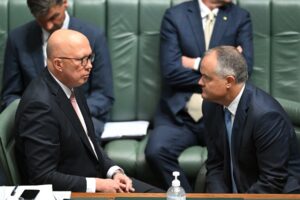The WA electricity market review, launched last week, is taking place in an electricity sector changing at unprecedented pace, with renewables and solar PV impacting on demand profiles and dynamics.
Over the past two days, the future of WA’s electricity market has been discussed in detail at the 8th WA Power and Gas conference, held in Perth. The effect solar PV has been having on WA electricity demand was emphasised in a presentation by Adrian Kemp, the NERA Economic Consulting Director, who described the growth of PV as “unprecedented.”
There were other positive noises about renewable energy made at the WA conference, with remote and rural utility Horizon Power introducing the theme that a centralised utility model, with central power plants feeding a grid, may not be the one to take the utility forward in the future.
Horizon Power Managing Director Frank Tudor set out the reforms the utility was undergoing to reduce its reliance on government subsidies.”Our traditional energy business may be very different and very small (in the future),” said Tudor.
The Horizon Power executive aims to reduce the utility’s reliance on state government subsidies by $100 million per year by 2018. Tudor said that Horizon would not compete with the private sector where possible and would look for revenue growth in areas such as distributed generation and energy efficiency. (Read more here).
When questioned on the subject, Horizon’s Tudor was evasive on the impact of distributed PV on its revenues. Instead Tudor addressed the high levels of electricity demand from air-conditioning in the north of WA.
Some mining companies, Tudor said, pay residents’ electricity bills as a part of their contract, removing any incentive to conserve power consumption during the long, hot summers and particularly during peak times.
Business consultancy NERA’s Adrian Kemp had asked Horizon’s Tudor about PV on his grids, and also addressed the impact PV was having on demand right around Australia.
He noted that while only as far back as 2006 most discussions in electricity supply challenges were surrounding the rapid uptake of air conditioning in Australian households, the uptake of solar PV has far outstripped it.
“It wasn’t that long ago that the whole debate was about the growth of air conditioners,” said Kemp, “the impact of solar PV far exceeds that today.”
Predicting the impact of PV on electricity demand is difficult, Kemp argued, with this being exacerbated by the rise of solar.
“If you come back to the question of forecasting demand, you have to become solar PV forecasters as well. That’s a new skill set.” Electricity traders, said Kemp, are increasingly using wind prediction models to assist their trading and in forecasting supplies. These traders and grid operators should now include forecasting solar PV output. “It adds to the complexity and challenges in understanding the demand and balance.”
Major discussions at the Power and Gas conference, however, were surrounding the SWIS and the market systems that may be put in place when the market review is completed in October.
Allan Dawson, the CEO of the Independent Market Operator (IMO), had much to say about the future of the SWIS, with the Perth based regulator saying that in his 15 years in electricity markets, never had he experienced a period of such intense change. Dawson has been involved in electricity markets in his native New Zealand and in Singapore.
“One of the things this industry is not short of is questions about what will happening the future,” said Dawson. “The industry needs to be flexible, our business models are chaining and we need to respond to those as they occur.”
The IMO’s work in delivering a higher degree of transparency to WA’s electricity market was praised by a number of presenters during the conference.
Despite all the talk of change and transition, there was still clear indications that the electricity sector is one that tends to be conservative. Andrew Sutherland, the General Manager WA projects for ERM Power, spoke of negative pricing beginning to appear during the night on the WA electricity exchange.
“This is the hidden cost of renewables,” said Sutherland. He also said that renewables have driven down the cost of wholesale power on the WA market. The average price on the WA wholesale market is approximately 9.5c/kWh, according to the IMO.
Independent electricity retailer Perth Energy was represented at the conference, with founder and Managing Director Ky Cao saying that savings of around $1 billion annually are delivered through the competition that has been introduced to the state’s contestable market. The contestable market represents only 1.4% of customers, however as they are large electricity consumers, they are responsible for about 60% of the demand on the SWIS.
The Perth Energy executive was not as positive as the effects renewable energy was having on the market. Ky Cao said that the cost of providing “standby power” to provide a backup to renewable capacity is not appropriately accounted for in retail prices. Cao said there is no avoiding that fixed charges will have to be increased to account for this. In a comment that was puzzling to a number of the renewable energy industry attendees, Cao said that more R&D is needed to develop “base-load renewable energy.”
RenewEconomy understands that a member of the state government’s electricity market review team attended the two-day conference.










